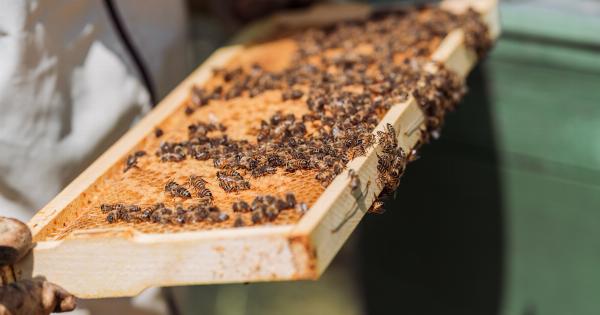Have you ever experienced the feeling of hunger? The gnawing sensation in your stomach that seems to consume your thoughts and energy? Hunger is a natural signal from our body, indicating the need for nourishment.
However, for millions of people worldwide, hunger is a constant companion, leaving them vulnerable to malnutrition and starvation. In this article, we will explore the hunger crisis and discuss a potential solution – the hunger-halting fracture.
The Global Hunger Crisis
 .
.
The global hunger crisis is a pressing issue affecting millions of individuals across the globe. According to the United Nations, an estimated 690 million people suffered from chronic hunger in 2019.
This figure represents nearly 9% of the world’s population, and the numbers have only risen due to recent global challenges such as conflicts, climate change, and economic instability.
Understanding Hunger
Hunger, also known as a physiological condition, is our body’s way of signaling the need for sustenance. It is primarily driven by the hypothalamus, a small region in our brain responsible for regulating appetite and satiety.
When our body’s energy reserves are depleted, the hypothalamus releases hunger hormones, such as ghrelin, which stimulate appetite.
The Consequences of Chronic Hunger
Chronic hunger can have severe consequences on physical health, cognitive development, and overall wellbeing.
Malnutrition, resulting from inadequate or imbalanced diets, can lead to stunted growth, weakened immune systems, and increased susceptibility to diseases. In children, chronic hunger can hinder brain development, impairing cognitive function and limiting future opportunities.
Introducing the Hunger-Halting Fracture
The hunger-halting fracture is an innovative solution designed to alleviate hunger and provide sustenance to those in need.
This groundbreaking approach utilizes advanced technology and biodegradable materials to create a small, implantable device that can provide essential nutrients directly into the bloodstream.
How Does it Work?
The hunger-halting fracture works by utilizing a specially designed membrane that encases a concentrated mixture of vital nutrients. Once implanted, the device’s membrane begins to slowly degrade, releasing the nutrients into the bloodstream.
This gradual release process ensures a steady supply of nourishment, effectively halting hunger for an extended period.
The Benefits of the Hunger-Halting Fracture
The hunger-halting fracture offers numerous benefits for addressing the global hunger crisis:.
- Immediate relief: The device provides instant relief from hunger, ensuring individuals have access to essential nutrients.
- Long-lasting effects: With its slow-release mechanism, the device can sustainably alleviate hunger for a considerable period.
- Customizable nutrition: The concentration and composition of the nutrients can be tailored to meet specific nutritional requirements, such as age, gender, and health conditions.
- Improved health outcomes: The steady supply of nutrients helps combat malnutrition and its adverse effects on physical and cognitive health.
- Minimal side effects: The hunger-halting fracture is designed to be biocompatible, minimizing potential side effects and complications.
Challenges and Future Implications
While the hunger-halting fracture shows immense promise, there are several challenges to overcome before widespread implementation:.
- Cost: Developing affordable manufacturing processes and ensuring the device’s accessibility for marginalized populations.
- Regulation: Establishing thorough regulatory frameworks to ensure the safety, efficacy, and ethical use of the technology.
- Education and acceptance: Educating communities about the device’s benefits and addressing potential cultural and social barriers to its acceptance.
- Scaling production: Expanding production capacities to meet the global demand and distribute the devices effectively.
The hunger-halting fracture represents a significant step forward in addressing the global hunger crisis. By harnessing technological advancements, we can strive towards a world where no individual suffers from chronic hunger.
However, it is crucial to approach this solution with an interdisciplinary perspective, fostering collaborations between scientists, engineers, policymakers, and communities to ensure its successful implementation.
With continued research, innovation, and collective effort, we can pave the way towards a hunger-free future, where everyone has the opportunity to thrive and lead healthy, fulfilling lives.































